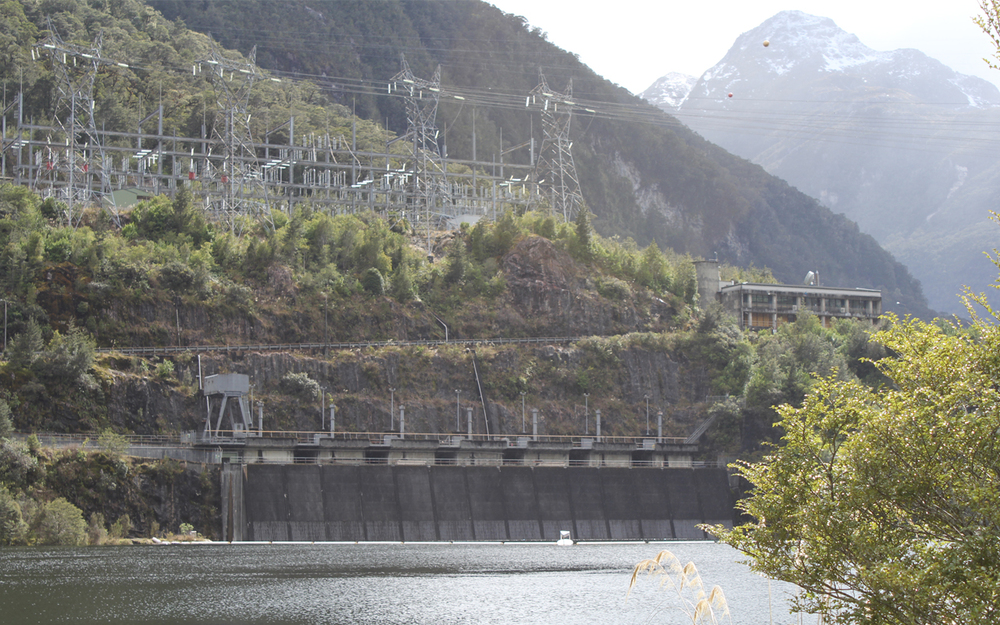Rio Tinto decision lifts lid on electricity industry debate
Marjorie Cook
09 July 2020, 4:30 AM

The looming closure of the Tiwai Point aluminium smelter in 14 months’ time has lifted the lid on simmering tensions over Government subsidies to Rio Tinto and the development of New Zealand’s electricity infrastructure.
While thousands of Southland workers and their families absorbed the reality of losing jobs next year, the Taxpayers Union let off steam by calling for the Australian-based global mining company to apologise to New Zealanders and pay back a $30 million Government handout made in 2013.
The smelter is one of two in the world producing high quality aluminium used in cars and aircraft.
It has been losing money for some time and posted a $46 million loss in February, attributed to high power and transmission costs and a 15% fall in global prices for aluminium.
When the smelter announced a $548 million loss in 2012, its international owners signaled potential closure and job losses and received a $30 million Government subsidy to save jobs.
Union spokesman Jordan Williams said Kiwi taxpayers wanted their money back.
“Under the previous Government, Rio Tinto took a $30 million bailout from taxpayers, on the understanding it would continue to operate and provide jobs. Now that the company has decided to shut up shop anyway, taxpayers want their money back,” he said.
Mr Williams said Rio Tinto earned more than $40 billion globally in revenue each year and paying back taxpayers would cost less than 0.1% of that.
“Our politicians need to be sending the same message. We risk becoming seen as a soft touch by foreign corporations who think they can take the money and run. If they won’t pay it back, at least do the right thing and apologise,” Mr Williams said.
The 2013 subsidy was provided by the John Key-led National Government.
Rio Tinto warned the Energy Minister Megan Woods and Finance Minister Grant Robertson of the potential closure at the end of 2019. The result of a review was delayed three months by Covid-19 and released today (July 9).
ACT leader David Seymour has blamed the Ardern-led Labour Government for the smelter’s closure, saying its recent activities such as a capital gains tax proposal, passing the Zero Carbon Act, raising the minimum wage and increasing taxes had made it harder for overseas investors to remain in the country.
“The closure of Tiwai Point signals the end of heavy industry under the Ardern Government,’ Mr Seymour said in a statement.
“Labour is squeezing the life out of the economy. For the past three years, it has made it much more difficult and costly for businesses like Tiwai Point to be productive.
“We have a Wellington-centric government of former student politicians that just doesn’t get how the economy works.
“When taxes and red tape are the answer to every problem, we shouldn’t be surprised when jobs up and leave,’’ Mr Seymour said.

Manapouri Power Station supplies electricity to the smelter. Greenpeace says the power could be made available to the domestic market.
Greenpeace executive director Dr Russel Norman wants the energy that would have been used by the smelter to be made available to the domestic market.
That would result in cheaper electricity for New Zealand households, provide an opportunity to increase electric transport options and cut carbon emissions from transport and industry, he said.
The smelter consumes about 13% of New Zealand’s power supply. It is generated by New Zealand’s largest hydro power station, Meridian Energy’s Manapouri Power Station, using water from the Waiau River.
Transpower owns the national grid and has already begun developing transmission capacity in the South Island so it can use any power freed up by the closure of the smelter.
Generator companies Meridian Energy and Contact Energy have both agreed to contribute $10 million each towards the project so it can be completed in 2022.
Dr Norman said Rio Tinto’s departure “blows any case for new coal, gas or oil development completely out of the water’’.
"The argument for more fossil fuel exploration, extraction and generation is over."
The Government needed to move quickly to develop a plan to deal with the Tiwai closure. This included ensuring a just transition for workers in the region, he said.
"The market isn’t going to solve this. We need the Government to manage the transition of both the energy sector and the Southland community through what is a significant time of upheaval,’’ Dr Norman said.
He suggested the Government use its Covid Recovery Budget to invest in new job opportunities for those affected by the closure.
“The Tiwai Point smelter has only survived because of massive handouts from the Government, cheap power - subsidised through higher household energy bills - and exemptions in the Emissions Trading Scheme.
"Every few years, Rio Tinto has had the Government and the power companies over a barrel, threatening to leave more than a thousand people jobless if they didn’t receive Government subsidies and rock-bottom power prices,’’ he said.
Associate Professor Nicola Gaston, Co-director, MacDiarmid Institute for Advanced Materials and Nanotechnology said the closure of the smelter was a loss for the people of Southland “at an awful time”.
“However, it is not a huge surprise, on some level: Rio Tinto has threatened to pull out previously, repeatedly, in negotiating the cost of the electricity supply with Government, and the discussion about what New Zealand should do with the energy is not new.
“Jeanette Fitzsimons (former Green Party leader) pointed out late last year that Emission Trading Scheme subsidies for the smelter would total a billion dollars by 2030, and that we should consider better uses for the 13 per cent of our electricity supply, all of it renewable.
“Many of my colleagues at the MacDiarmid Institute are deeply passionate about this being the right time to invest in new tech to make the most of our renewable energy advantages in New Zealand,’’ Prof Gaston said.
Dr Anna Berka, lecturer in Management, Entrepreneurship and Innovation at Massey University said the smelter closure would create temporary surplus capacity, resulting in downwards pressure on market prices and “very likely’’ reducing the viability of new generation capacity currently under development.
“The current crisis has clearly pushed it over the edge. Previous governments went far to make it comfortable here; it was granted some of the lowest electricity prices, reportedly below cost.
“In return, Rio Tinto has been obstructive to emissions pricing, and by all indications seems to have abused our resource consent process as well.’’
Dr Berka said in terms of emissions, the closure “may actually be a good development,” because having additional low-cost hydro capacity available might allow the closure of Huntly Power Station sooner.
Genesis Energy has indicated it will close down its two coal and gas burning turbines at Huntly in 2022.
“The big question is whether Southland can come up with creative ways to make use of existing assets and skills and re-channel them into new employment opportunities. Despite the fact that Rio Tinto’s departure ultimately seemed inevitable, it does not sound like there is a transition plan in place for employees,” Dr Berka said.

NZ FIrst list MP and Taieri candidate Mark Patterson vows to support Southland region.
New Zealand First MP list Mark Patterson, who lives at Lawrence, has added his voice to the chorus of discontent with Rio Tinto.
He said it was “unconscionable” that Rio Tinto was “bailing on Southlanders at the height of an economic crisis” and accused it of “using local workers to play hard-ball with New Zealand power companies’’.
Mr Patterson has vowed to back the Southland region over the closure of the smelter and also over the aluminium dross dump at the former Mataura paper mill site.
READ MORE:
Devastation at Tiwai Point smelter closure announcement
Tiwai Point aluminium smelter to close next year
EDS files proceedings against New Zealand Aluminium Smelters
Meridian spilled water to hike electricity prices – Authority ruling

